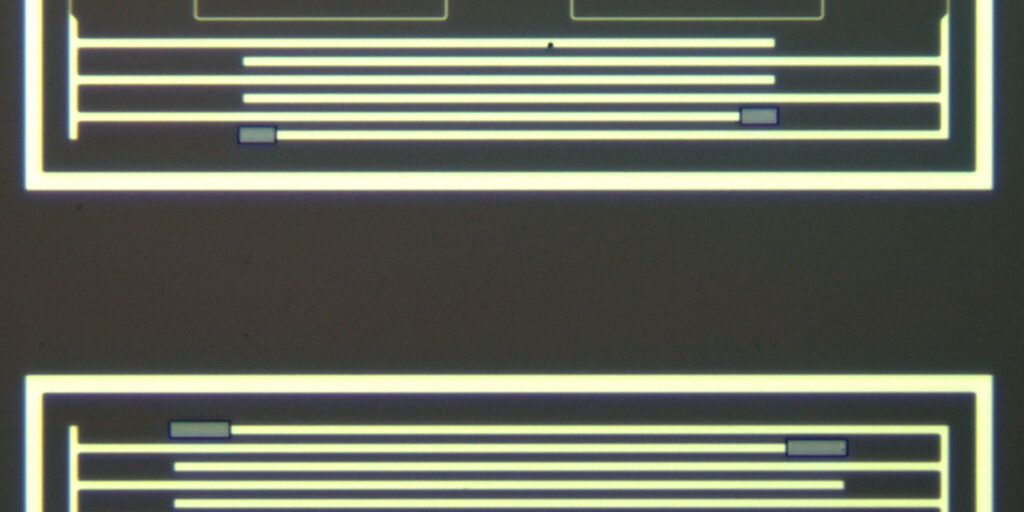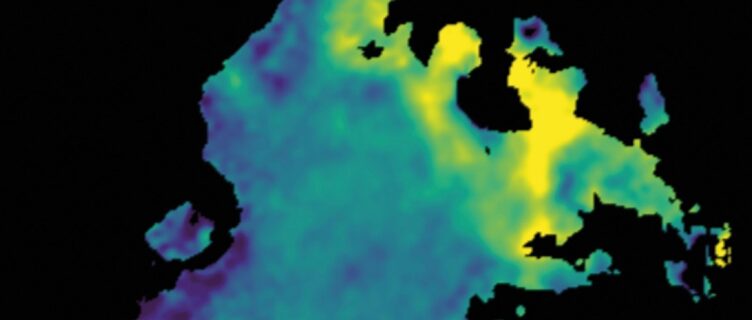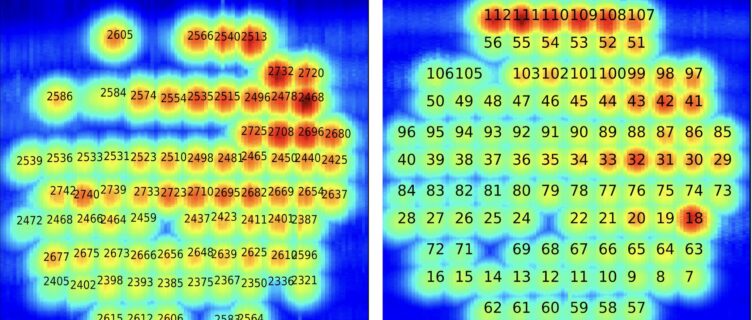Kinetic Inductance detectors (KIDs) are very powerful detectors for millimeter-waves, and for years they have been deployed in instruments such as IRAM’s NIKA2 widefield camera, hosting 1000s of pixels. However, due to fabrication difficulties, not all pixels on these large arrays are usable, due to problems with nanofabrication. We have developed a method to repair the unusable pixels and have shown that this method can help us to go to a 100% array yield.
Kinetic Inductance Detectors: superconducting microresonators
Kinetic Inductance Detectors have been developed since 2003. They consist of a microscopic LC-resonator, which like a guitar string resonates at a certain frequency. The precise frequency of the resonator – the tone of the guitar string – depends on the incident radiation and is thus a measure for the observed intensity. Their resonant nature makes it very easy to have large arrays with many pixels. Each pixel has its own resonant frequency, like there are multiple strings on a guitar.
Micrometer-wide lines, nanometer variations
Although it is relatively easy to make very large arrays using KIDs, each individual pixel consists of superconducting lines that are only a few micrometers wide, and only about 20 nanometer thick. Tiny variations of these dimensions will detune the resonator, as if the guitar string would go off-key. If the detuning is too big, the pixel will become unusable. We have demonstrated that indeed the detuning of our detectors is mainly caused by these size variations, by carefully correlating the measured size with the measured detuning for each individual pixel.
Lithography comes to the rescue

Each individual pixel is retuned by cutting away a small part of the on-chip capacitor
Fortunately, the lithography processes that we use for creating our detector arrays, can also be used to remediating the problem. After measuring the exact tone of each individual pixel, we know by how much it is off-key. Using our cleanroom technologies, we can then adapt each individual pixel exactly by the right amount to get everyone back in tune. We have demonstrated that this technology works also for very large, 1000s-of-pixels size arrays. These results were published in Applied Physics Letters, https://doi.org/10.1063/5.0058335.
Our latest updates
Explore all the latest news from our research and technology groups and never miss out on important upcoming events.















